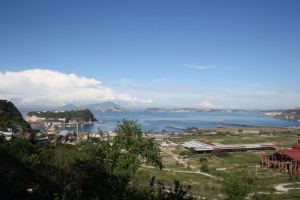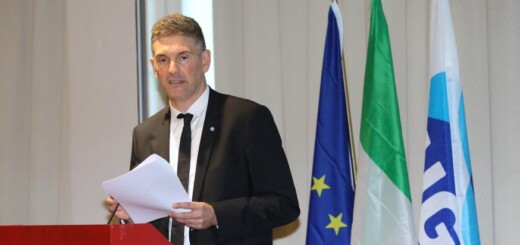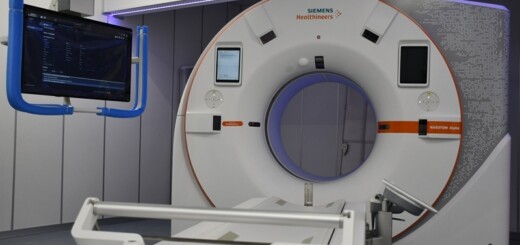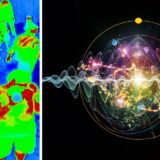Campi Flegrei, analizzati gli andamenti del sollevamento del suolo e della sismicità nel periodo 2000-2020

Un nuovo studio analizza il lento sollevamento del suolo dei Campi Flegrei e l’attività sismica che lo accompagna, per misurarne la rapidità e comprenderne l’evoluzione

Roma, 15 dicembre 2022 – Nel periodo 2000-2020 sono stati riconosciuti e misurati, attraverso i dati acquisiti dal Sistema di Posizionamento Globale (GPS) e dalla rete sismica, due andamenti sovrapposti del sollevamento del suolo e della sismicità nell’area dei Campi Flegrei: una accelerazione su scala decennale e oscillazioni periodiche.
Questi i risultati dello studio “Data analysis of the unsteadily accelerating GPS and seismic records at Campi Flegrei caldera from 2000 to 2020”, recentemente pubblicato sulla rivista Scientific Reports di Nature condotto da un team di ricercatori dell’Istituto Nazionale di Geofisica e Vulcanologia (INGV), della Scuola Normale Superiore di Pisa e delle Università di Buffalo, Tufts e Penn State (USA).
La caldera dei Campi Flegrei è interessata, fin dagli anni ‘50, da significativi movimenti del suolo, fra cui il lento sollevamento tuttora in corso da quasi vent’anni. Questo fenomeno è chiamato bradisismo ed è caratterizzato da una sequenza di episodi di deformazione accompagnati da incrementi nell’attività sismica.
L’obiettivo dello studio è stato quello di comprendere la rapidità del fenomeno bradisismico e la sua possibile evoluzione. Inoltre, gli scienziati hanno indagato la presenza di fenomeni di periodicità negli episodi di deformazione del suolo e della sismicità più intensa.
A tal fine i ricercatori hanno analizzato matematicamente la velocità e l’accelerazione del sollevamento del suolo della caldera, il numero degli eventi sismici e la loro energia cumulativa anche comparando i dati registrati nel periodo 1983-2000 con quelli registrati nel periodo 2000-2020. Questa analisi ha permesso il riconoscimento di due andamenti temporali sovrapposti: una accelerazione su scala decennale e oscillazioni ricorrenti di varia frequenza.
“Le nostre analisi – spiega Flora Giudicepietro, ricercatrice dell’Osservatorio Vesuviano dell’INGV e coautrice dello studio – mostrano un aumento della velocità del sollevamento del suolo e un aumento della frequenza di accadimento dei terremoti a partire dal 2005. Il 90-97% del loro incremento è stato registrato dopo il 2011 e il 40-80% dopo il 2018. Il sollevamento del suolo sta tuttora proseguendo e nel mese di ottobre 2022 presso la stazione del Rione Terra di Pozzuoli lo spostamento verticale rispetto ai valori registrati nel 2005 ha raggiunto circa 100 cm, così come riportato nei Bollettini periodicamente emessi dall’Osservatorio Vesuviano”.
Un ulteriore risultato dello studio ha riguardato i tempi di ricorrenza delle oscillazioni periodiche dei segnali. “Le velocità registrate presentano oscillazioni coerenti fra i segnali di sollevamento e il numero degli eventi sismici – spiega Andrea Bevilacqua, ricercatore della Sezione di Pisa dell’INGV e primo autore dello studio – Abbiamo osservato sette principali picchi di oscillazione a partire dal 2000, uno ogni 2,8-3,5 anni circa, con oscillazioni secondarie circa a metà di questi intervalli. Dai segnali si è individuato anche un ciclo di periodo più lungo, pari a 6,5-9 anni”.
Lo studio di dettaglio dell’accelerazione su scala decennale ha permesso anche stime ulteriori. “Per poter stimare le proprietà dell’accelerazione su scala decennale, abbiamo applicato un modello rappresentativo della dinamica che conduce alla rottura nei materiali elastici fragili sottoposti a uno sforzo costante – continua Andrea Bevilacqua – Questo ci ha permesso di calcolare dei tempi limite teorici per questa accelerazione, potenzialmente rappresentativi di uno stato critico del sistema, nell’ordine di 10 o 20 anni a seconda che si considerino rispettivamente i dati dell’attività sismica o quelli di deformazione del suolo. È importante sottolineare che il modello è valido nell’ipotesi che gli andamenti osservati negli ultimi due decenni proseguano in futuro nello stesso modo”.
“La stima dell’accelerazione decennale registrata dal 2005 – conclude Augusto Neri, ricercatore dell’INGV e coautore dello studio – è un aspetto particolarmente rilevante emerso dall’analisi. È bene chiarire che i limiti temporali stimati non corrispondono a probabilità assolute dell’accadimento di eventi eruttivi a causa della natura semplificata del modello adottato e, soprattutto, perché l’accelerazione decennale finora osservata nei dati potrebbe modificarsi nel futuro, sia rallentando che accelerando maggiormente. I risultati dello studio rappresentano comunque un ulteriore stimolo a mantenere alta la guardia sull’evoluzione futura della caldera Flegrea”.
La ricerca pubblicata ha una valenza essenzialmente scientifica, priva al momento di immediate implicazioni in merito agli aspetti di protezione civile.
*******
Campi Flegrei, analyzed the trends of ground uplift and of seismicity in the period 2000-2020
A new study analyzes the slow ground uplift of Campi Flegrei and the seismic activity that accompanies it, to measure its rapidity and understand its evolution
Rome, December 15, 2022 – In the period 2000-2020, through the data acquired by the Global Positioning System (GPS) and by the seismic network, two superimposed trends of ground uplift and seismicity in the Campi Flegrei area were recognized and measured: an acceleration on a ten-year scale and periodic oscillations.
These are the results of the study “Data analysis of the unsteadily accelerating GPS and seismic records at Campi Flegrei caldera from 2000 to 2020″, recently published in the journal Scientific Reports of Nature conducted by a team of researchers from the Istituto Nazionale di Geofisica e Vulcanologia (INGV), of the Scuola Normale Superiore of Pisa and of the Universities of Buffalo, Tufts and Penn State (USA).
Since the 1950s, the Campi Flegrei caldera has been affected by significant ground movements, including the slow uplift that has been ongoing for almost twenty years. This phenomenon is called bradyseism and is characterized by a sequence of deformation episodes accompanied by increases in seismic activity.
The aim of the study was to understand the rapidity of the bradyseismic phenomenon and its possible evolution. Furthermore, the scientists investigated the presence of periodic phenomena in the episodes of ground deformation and the most intense seismicity.
With this aim, the researchers mathematically analyzed the speed and acceleration of the caldera ground uplift, the number of seismic events and their cumulative energy, comparing the data recorded in the period 1983-2000 with those recorded in the period 2000-2020. This analysis allowed the recognition of two superimposed temporal trends: an acceleration on a ten-year scale and recurring oscillations of various frequencies.
“Our analyses – explains Flora Giudicepietro, researcher at the Osservatorio Vesuviano of INGV and co-author of the study – show an increase in the speed of ground uplift and an increase in the frequency of occurrence of earthquakes since 2005. The 90- 97% of their increase was recorded after 2011 and 40-80% after 2018. The uplift of the ground is still continuing and in October 2022 at the Rione Terra di Pozzuoli station the vertical displacement compared to the values recorded in 2005 reached about 100 cm, as reported in the Bulletins periodically issued by the Osservatorio Vesuviano”.
A further result of the study concerned the recurrence times of the periodic oscillations of the signals. “The recorded speeds show coherent oscillations between the uplift signals and the number of seismic events – explains Andrea Bevilacqua, researcher at the Pisa Section of INGV and first author of the study – We have observed seven major oscillations since 2000, one about every 2.8 to 3.5 years, with minor oscillations about halfway between these intervals. From the signals, a longer period cycle has also been identified, equal to 6.5-9 years”.
The detailed study of the acceleration on a ten-year scale has also allowed further estimates. “In order to estimate the acceleration properties on a decadal scale, we applied a representative model of the dynamics that lead to failure in brittle elastic materials subjected to constant stress – continues Andrea Bevilacqua – This allowed us to calculate theoretical limit times for this acceleration, potentially representative of a critical state of the system, in the order of 10 or 20 years depending on whether we consider the seismic activity data or the ground deformation respectively. It is important to underline that the model is valid under the assumption that the trends observed in the last two decades continue in the same way in the future”.
“The estimate of the ten-year acceleration recorded since 2005 – concludes Augusto Neri, INGV researcher and co-author of the study – is a particularly relevant aspect that emerged from the analysis. It should be clarified that the estimated time limits do not correspond to absolute probabilities of the occurrence of eruptive events due to the simplified nature of the model adopted and, above all, because the ten-year acceleration observed so far in the data could change in the future, both slowing down and accelerating more. However, the results of the study represent a further stimulus to keep our guard up on the future evolution of the Campi Flegrei caldera”.
The published research has an essentially scientific value, without immediate implications regarding the aspects of civil protection at the moment.






































































